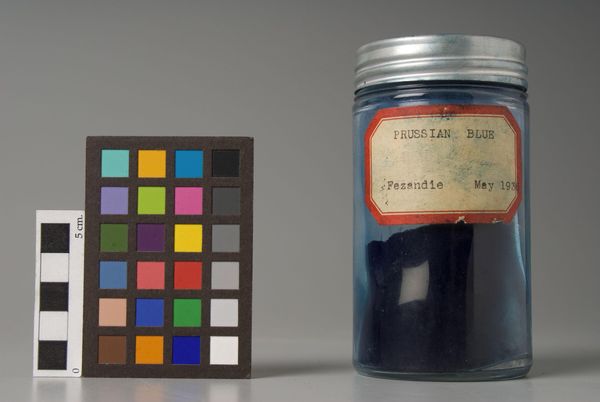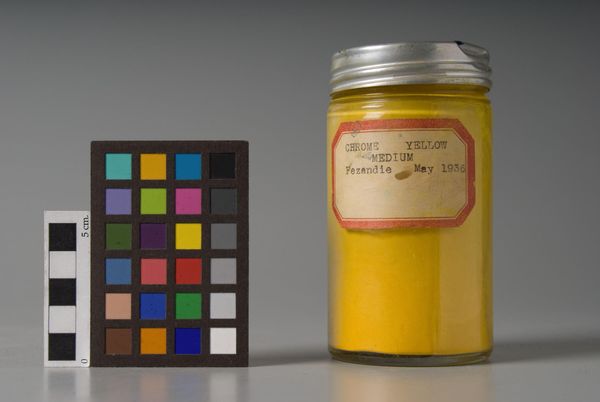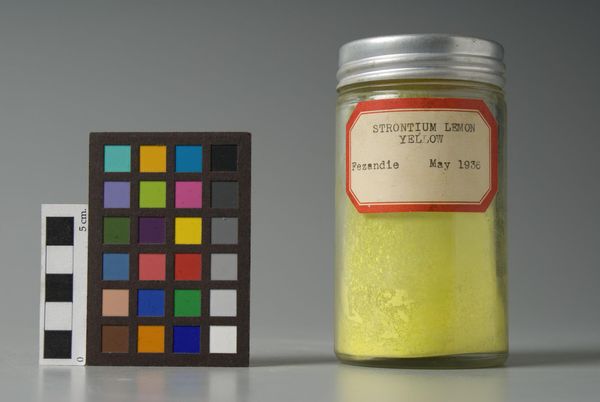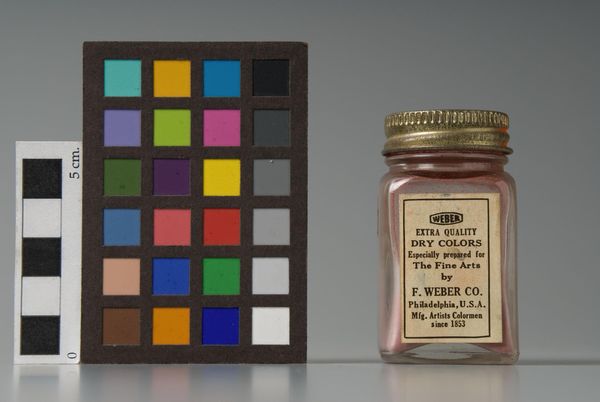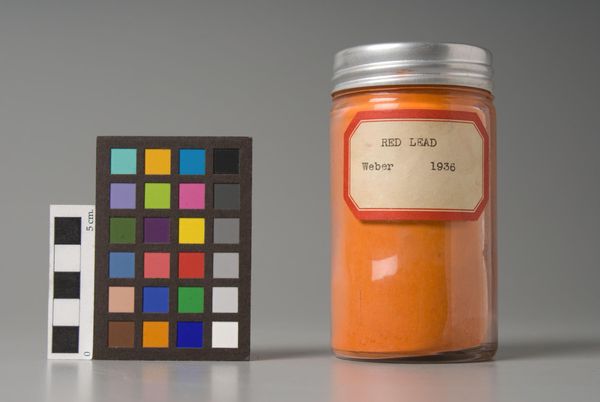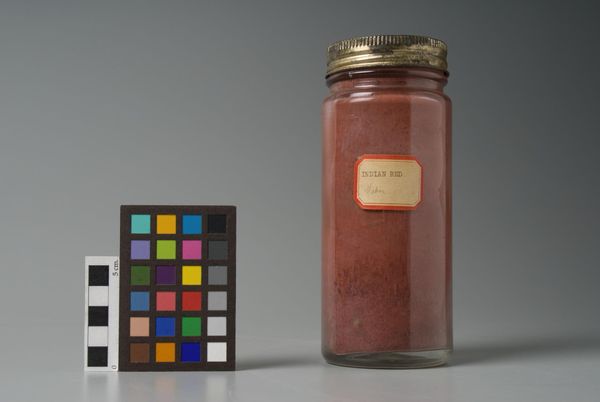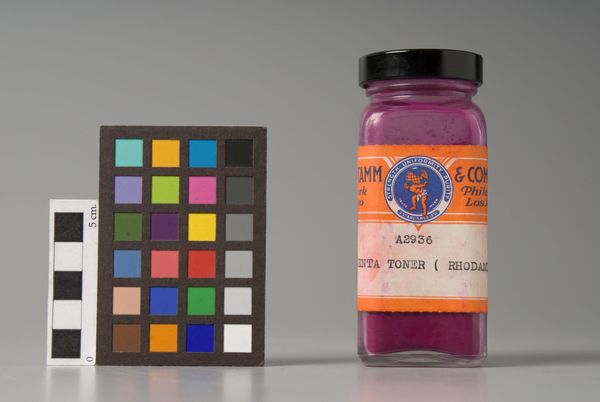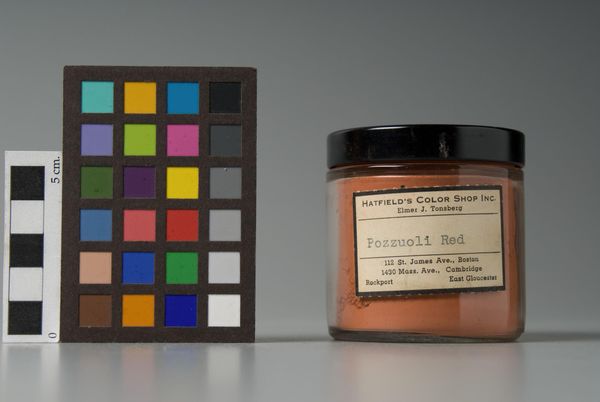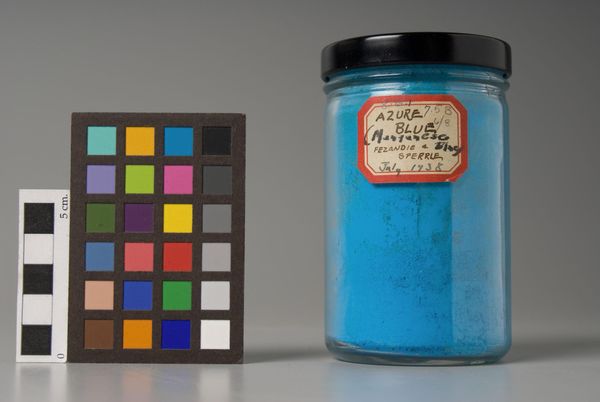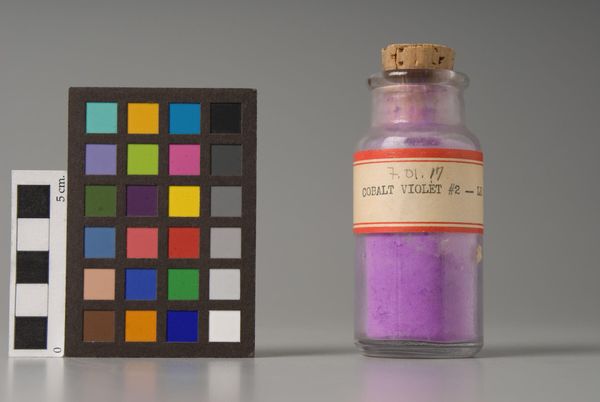
Copyright: CC0 1.0
Curator: What strikes me immediately is the sheer vibrancy of that cobalt violet pigment. Editor: Indeed. We’re looking at a jar of “Genuine Cobalt Violet,” produced by Fezandie & Sperrle, with a label dating it to May 1936. It's a fascinating insight into the industrial production of artists' materials. Curator: Absolutely, and cobalt violet, despite its beauty, was notoriously expensive and difficult to produce. Its appearance signaled a certain level of affluence for the artist using it. Editor: The jar itself speaks to the commodification of art—pigment reduced to a product, neatly packaged for consumption. It makes you consider the labor involved, from mining the raw materials to the factory floor. Curator: It’s a testament to the changing landscape of art production in the 20th century, moving away from handcrafted pigments to mass-produced colors. Editor: Exactly. Examining something as seemingly simple as a jar of pigment opens up questions about the social and economic forces shaping art. Curator: It gives a concrete look at the materials that made art possible. Editor: Quite so. A reminder that even art has humble, material beginnings.
Comments
No comments
Be the first to comment and join the conversation on the ultimate creative platform.
